DPP8/DPP9 inhibition elicits canonical Nlrp1b inflammasome hallmarks in murine macrophages
- PMID: 30718379
- PMCID: PMC6362307
- DOI: 10.26508/lsa.201900313
DPP8/DPP9 inhibition elicits canonical Nlrp1b inflammasome hallmarks in murine macrophages
Abstract
Activating germline mutations in the human inflammasome sensor NLRP1 causes palmoplantar dyskeratosis and susceptibility to Mendelian autoinflammatory diseases. Recent studies have shown that the cytosolic serine dipeptidyl peptidases DPP8 and DPP9 suppress inflammasome activation upstream of NLRP1 and CARD8 in human keratinocytes and peripheral blood mononuclear cells. Moreover, pharmacological inhibition of DPP8/DPP9 protease activity was shown to induce pyroptosis in murine C57BL/6 macrophages without eliciting other inflammasome hallmark responses. Here, we show that DPP8/DPP9 inhibition in macrophages that express a Bacillus anthracis lethal toxin (LeTx)-sensitive Nlrp1b allele triggered significantly accelerated pyroptosis concomitant with caspase-1 maturation, ASC speck assembly, and secretion of mature IL-1β and IL-18. Genetic ablation of ASC prevented DPP8/DPP9 inhibition-induced caspase-1 maturation and partially hampered pyroptosis and inflammasome-dependent cytokine release, whereas deletion of caspase-1 or gasdermin D triggered apoptosis in the absence of IL-1β and IL-18 secretion. In conclusion, blockade of DPP8/DPP9 protease activity triggers rapid pyroptosis and canonical inflammasome hallmarks in primary macrophages that express a LeTx-responsive Nlrp1b allele.
© 2019 de Vasconcelos et al.
Conflict of interest statement
N Van Opdenbosch, R Martín-Pérez, and M Lamkanfi are employees of Janssen Pharmaceutica. The authors declare that they have no conflict of interest.
Figures
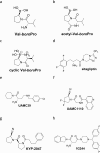
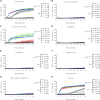
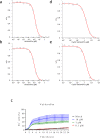
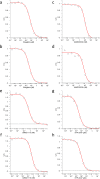
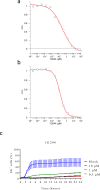
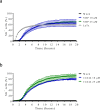
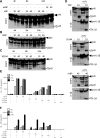
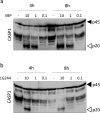
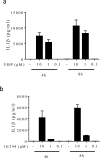
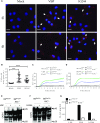


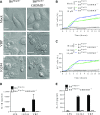
Similar articles
-
Human DPP9 represses NLRP1 inflammasome and protects against autoinflammatory diseases via both peptidase activity and FIIND domain binding.J Biol Chem. 2018 Dec 7;293(49):18864-18878. doi: 10.1074/jbc.RA118.004350. Epub 2018 Oct 5. J Biol Chem. 2018. PMID: 30291141 Free PMC article.
-
DPP8/9 inhibitors are universal activators of functional NLRP1 alleles.Cell Death Dis. 2019 Aug 5;10(8):587. doi: 10.1038/s41419-019-1817-5. Cell Death Dis. 2019. PMID: 31383852 Free PMC article.
-
Caspase-1 autoproteolysis is differentially required for NLRP1b and NLRP3 inflammasome function.Proc Natl Acad Sci U S A. 2014 Dec 2;111(48):17254-9. doi: 10.1073/pnas.1415756111. Epub 2014 Nov 17. Proc Natl Acad Sci U S A. 2014. PMID: 25404286 Free PMC article.
-
The NLRP1 Inflammasome in Human Skin and Beyond.Int J Mol Sci. 2020 Jul 6;21(13):4788. doi: 10.3390/ijms21134788. Int J Mol Sci. 2020. PMID: 32640751 Free PMC article. Review.
-
The NLRP1 and CARD8 inflammasomes.Immunol Rev. 2020 Sep;297(1):13-25. doi: 10.1111/imr.12884. Epub 2020 Jun 19. Immunol Rev. 2020. PMID: 32558991 Free PMC article. Review.
Cited by
-
P38 kinases mediate NLRP1 inflammasome activation after ribotoxic stress response and virus infection.J Exp Med. 2023 Jan 2;220(1):e20220837. doi: 10.1084/jem.20220837. Epub 2022 Oct 31. J Exp Med. 2023. PMID: 36315050 Free PMC article.
-
Cell death-mediated cytokine release and its therapeutic implications.J Exp Med. 2019 Jul 1;216(7):1474-1486. doi: 10.1084/jem.20181892. Epub 2019 Jun 11. J Exp Med. 2019. PMID: 31186281 Free PMC article. Review.
-
Retention of ES cell-derived 129S genome drives NLRP1 hypersensitivity and transcriptional deregulation in Nlrp3tm1Flv mice.Cell Death Differ. 2024 Dec;31(12):1717-1729. doi: 10.1038/s41418-024-01379-2. Epub 2024 Sep 17. Cell Death Differ. 2024. PMID: 39289506 Free PMC article.
-
Dipeptidyl peptidase 9 triggers BRCA2 degradation and promotes DNA damage repair.EMBO Rep. 2022 Oct 6;23(10):e54136. doi: 10.15252/embr.202154136. Epub 2022 Aug 1. EMBO Rep. 2022. PMID: 35912982 Free PMC article.
-
The NLR gene family: from discovery to present day.Nat Rev Immunol. 2023 Oct;23(10):635-654. doi: 10.1038/s41577-023-00849-x. Epub 2023 Mar 27. Nat Rev Immunol. 2023. PMID: 36973360 Free PMC article. Review.
References
-
- Adams S, Miller GT, Jesson MI, Watanabe T, Jones B, Wallner BP (2004) PT-100, a small molecule dipeptidyl peptidase inhibitor, has potent antitumor effects and augments antibody-mediated cytotoxicity via a novel immune mechanism. Cancer Res 64: 5471–5480. 10.1158/0008-5472.can-04-0447 - DOI - PubMed
-
- Coutts SJ, Kelly TA, Snow RJ, Kennedy CA, Barton RW, Adams J, Krolikowski DA, Freeman DM, Campbell SJ, Ksiazek JF, et al. (1996) Structure-activity relationships of boronic acid inhibitors of dipeptidyl peptidase IV. 1. Variation of the P2 position of Xaa-boroPro dipeptides. J Med Chem 39: 2087–2094. 10.1021/jm950732f - DOI - PubMed
Publication types
MeSH terms
Substances
LinkOut - more resources
Full Text Sources
Molecular Biology Databases
Research Materials
Miscellaneous
